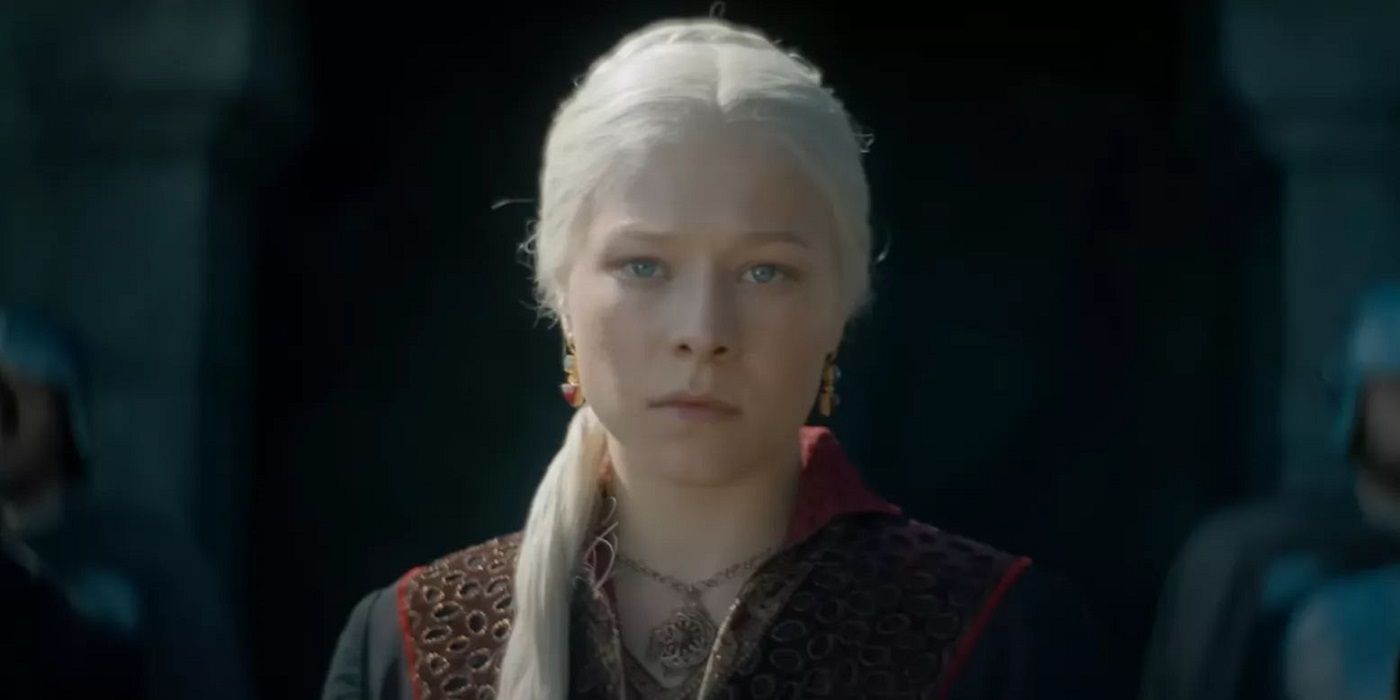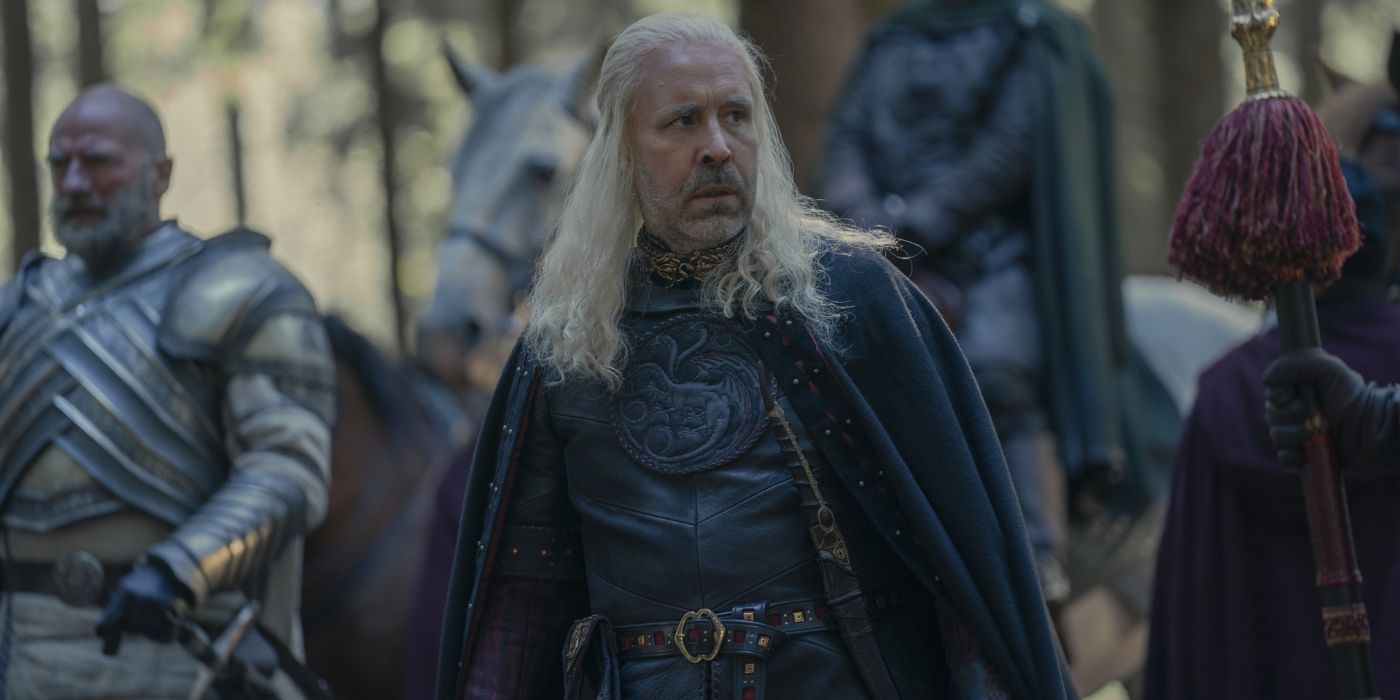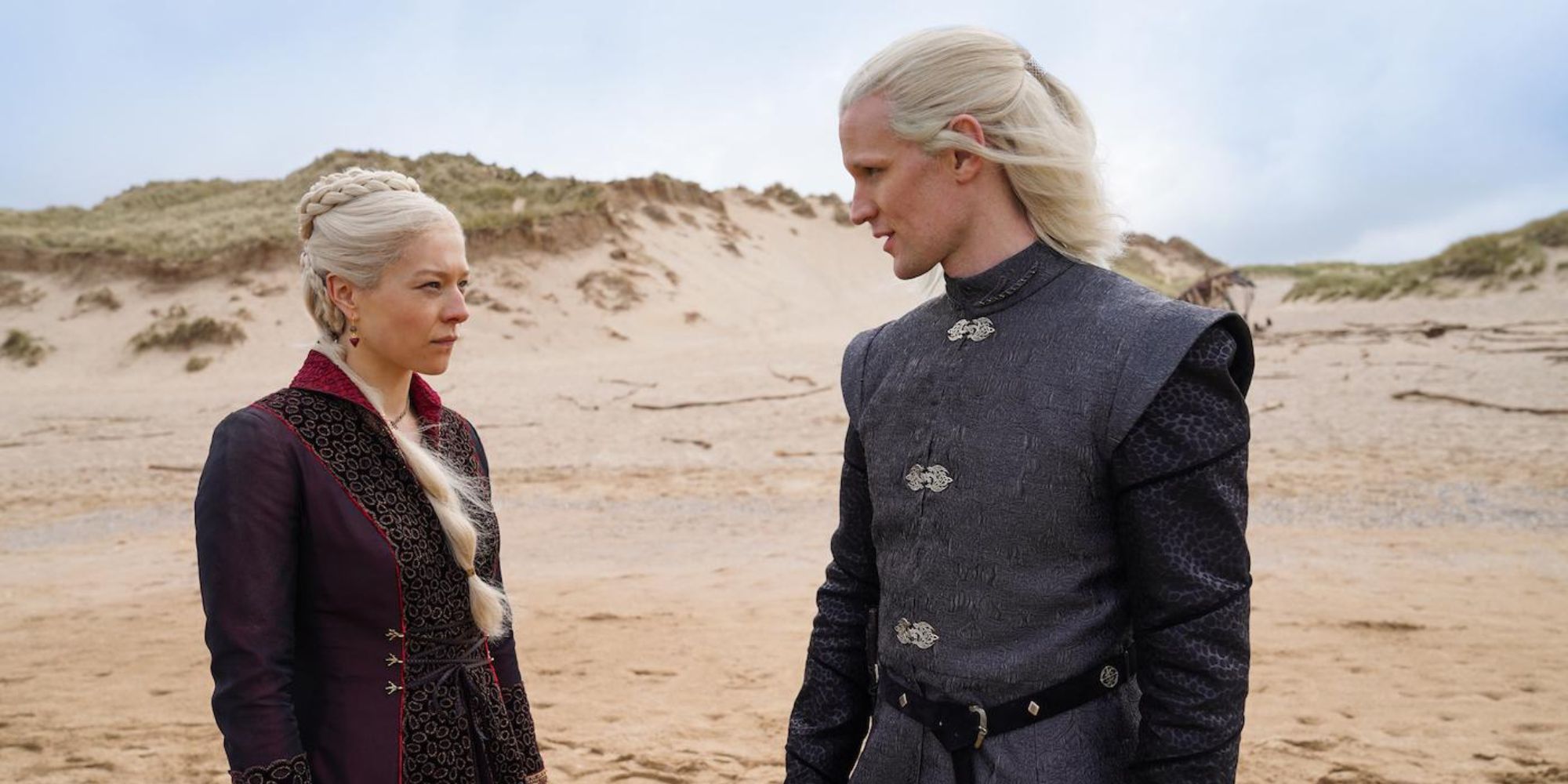Even with the critical and audience disdain for the final season of Game of Thrones, the franchise has returned to the height of popularity the original series once had with House of the Dragon, and with all the more incest. However, this story is set just shy of 2 centuries before Thrones, showing the continent in a very different position than it once was.
The premiere episode of House of the Dragon takes place just around a century after Aegon I conquered the continent. The most significant difference in the set-up of the two shows is the state of the continent prior to the shows. While Game of Thrones is spurned by Robert's Rebellion and its aftermath, House of the Dragon follows a long stretch of peace -- from Jaehaerys I's (Michael Carter) 55-year rule to the beginning of Viserys I's (Paddy Considine) sheepish reign. Not only does this prequel depict the events leading up to Westeros' fist civil conflict (other than the conquering of course), but it also shows how peace was one of the culprits in fracturing the great house that would eventually go practically extinct.
To understand this conflict, known as the Dance of the Dragons, it's important to note one of George R.R. Martin's most resonating quotes, encapsulating Westerosi politics quite well: "The seeds of war are oft planted during times of peace." Pretty self-explanatory -- it's often the background machinations of someone close to the crown that fuels chaos and guides house loyalties (and usually both). In the case of House of the Dragon, this manifests in Alicent Hightower's (Emily Carey) subtle placement in the King's view by her father, Otto (Rhys Ifans), to secure an heir to the Iron Throne with Hightower blood.
Jaehaerys' Peace and Viserys' Indecision Lead to the Civil War
However, the conditions that allowed for these political maneuvers are actually rooted in the peace that took place in the beginning of Targaryen control over Westeros, specifically during the reigns of Jaehaerys I and Viserys I. Jaehaerys' reign was the longest of any ruler of Westeros and was known for the prosperity and security it brought to the realm. Viserys didn't have a violent reign either, but his was characterized more by inaction and fear of ruining the legacy left to him by Jaehaerys, perhaps compounded by the fact that he was chosen over his cousin, Rhaenys (Eve Best). Viserys' inaction was even one of his most significant characteristics, from his refusal to intercede at The Stepstones to him freezing up when Criston Cole (Fabien Frankel) killed Ser Joffrey Lonmouth (Solly McLeod) at his daughter's wedding.
This long stretch of peace saved a lot of lives from battles and conflict, but also gave the elite a lot of spare time on their hands. With such prosperity in the realm, not only did the Targaryens have time to have many children, many of them survived to have adult lives. Living in such a peaceful era ensured that this generation of Targaryen offspring also wouldn't be lost to war. So, not only did the Targaryens have a grander family tree than ever, but these children were alive long enough to try to lay a claim to the Iron Throne.
Still, Jaehaerys had an extremely long reign, and lifespans in this fictional world are shorter than what can be expected of us today. By the time he reached the end of his life, The Old King outlived all but 2 of his children (who he had disowned), his sister-wife, and many of his trusted advisors, leaving him to pick his heir out of his grandchildren. His council picked Viserys I, passing over Rhaenys, preserving patriarchal tradition for the time being, but making a choice that would stay with many of the surviving Targaryens for decades to come. It's partly this display of the patriarchy that would help spurn The Dance of Dragons, the memory surviving as a motivator and deterrent. By the time Viserys I dies, plenty of teenage and adult Targaryens could lead armies and fly on dragons into battle, priming Westeros for conflict on a scale it hadn't seen before.
Too Many Targaryens Is a Consistent Problem in Westeros
The Dance of Dragons isn't the last time this surplus problem causes a conflict either. A similar war for the throne takes place 6 decades later after King Aegon IV legitimizes all of his bastard children, of which there is plenty. One of these bastards, Daemon Waters, rebels and creates his own house, House Blackfyre, to challenge his brother, Daeron II, for the throne, proving once again that 'too many heirs' continues to be a problem for the Targaryens until it cause there only one to be left, and one who chose to murder the other last remaining Targaryen at that.
The straw that broke the dragon's back, however, came down to Rhaenyra (Milly Alcock) and how her position threatened patriarchal traditions in the realm, similarly to Rhaenys only a few years prior. After losing his first wife to childbirth, the king's only choice as heir was his only child, who happened to be a girl. Now, even despite the many claims to the throne, the idea of a woman on the Iron Throne persisted. Even after Viserys sired a boy with his second wife, Alicent Hightower, he kept Rhaenyra in place as heir and worked to secure her position through marriage with House Velaryon. It's only thanks to his daughter that he realizes his wife's placement by House Hightower and his Hand Otto, at which point Viserys replaced him. Much of Rhaenyra's struggle in House of the Dragon actually revolves around her place in Westerosi society as a woman and the ways in which she pushes the limits of her role.
With the birth of Aegon II, Viserys and Alicent's firstborn son, the lines are drawn for a conflict just waiting to happen -- if it wasn't this succession war, it would likely be another one. And not only is the more external misogyny that drives this war, it also drives Alicent and Rhaenyra in a way that's more intrinsic, unrelated to the Dance of Dragons, itself, like the way Alicent treats Rhaenyra after hearing the rumors about her experience in the brothel. House of the Dragon takes the opportunity to tell how women are effectively used to obtain and preserve power, slightly different from Game of Thrones, which seemed to harm women just because. Rhaenyra and Alicent show two very reactions to misogyny in this context -- one pushes the envelope to find safety in change, and the other falls back on the traditions, finding safety in the familiar.
House of the Dragon provides much-needed insight into the state of women and the illusion of peace that is inherent of society in the Game of Thrones universe. With only one confirmed Targaryen for much of Game of Thrones, it's not precisely clear what drove the great house to ruins, and if it could affect other houses in the future. While incest seems like a good idea to the Targaryens, their ableist nature actually provides an easy path for their downfall, taking their coveted dragons with them. The larger a group is, the more likely more people will dissent to the leadership, and with a king like Viserys who doesn't really do much about anything, well.... heads will roll.



